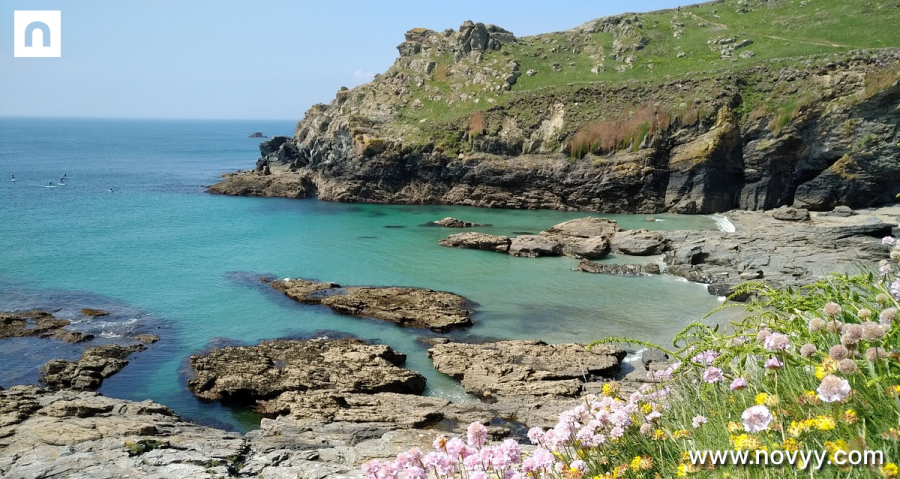
Cornwall is a county in the southwestern area of the United Kingdom known for its beaches, which are recognised globally as its main appeal, making it one of the prime surfing locations. Cornwall is also known for its historic architecture, with several castle ruins and mines scattered throughout the county. Cornwall was established circa 10,000 years ago, during the mid-Stone Age. Cornish mines were among the largest industries in Europe at the turn of the nineteenth century, and they helped to propel the industrial revolution. As a result, the copper industry grew faster than any other sector in the British economy, and West Cornwall became known as the copper industry's core. This is the first part of a two-part series focusing on Cornwall. This article will focus on the heritage, history, attractions, and tourism that Cornwall has to offer.
History
Around 10,000 BC, hunter-gatherers began to settle along Cornwall's coastline. Agricultural development was rapid between 4,000 BC and 2,500 BC during the Neolithic Age. Farming began during this period, and monuments were built as the population grew. Metalworking was introduced in this country during the early Bronze Age, between 2,400 BC and 1,500 BC. Open-pit mining enabled the extraction of natural resources, leading to the discoveries of tin and copper. As a result, many additional ceremonial and burial monuments were built. During the Iron Age, which lasted from 600 BC to 43 AD, iron steadily supplanted bronze as iron tools and equipment became more mass-produced. On hilltops and headlands around Cornwall, economic and social centres for manufacturing and trading began to emerge. Until the mid-nineteenth century, the industrial mining trade dominated Europe. Cornwall was one of the richest mining sites during this time period.
In 1800, the industrial sector hit a turning point as new ideas began to emerge. The steam-powered vehicle and the beam engine are two of the most renowned. As mining progressed, industrial railway networks were built across Cornwall to connect the mineral sector to the sea for export. The early decades of the nineteenth century can be considered mining's demise. While the population grew, the level of living declined due to mining safety issues. Following the decline of mining, the railway sector flourished, building many railway routes that attracted the first millions of tourists to Cornwall. Cornwall is still a tourist favourite and has been voted the number one UK holiday destination in the British Travel Awards for many years running.
Attractions
Cornwall has numerous wonderful attractions for both locals and tourists. The Eden Project is the most prominent attraction. This is a spectacular world garden contained in massive tropical biomes. This tropical garden offers a wide variety of plant life and can be used as a one-of-a-kind source of education and understanding about sustainability. There is also a restaurant, a café, and gift shops on-site. Other attractions, such as world-class sculptures and art, are on display.
Tate St Ives is a renowned art gallery with a view of the Atlantic Ocean. This gallery exhibits some of the best British artworks of the twentieth century, as well as rotating exhibitions encompassing the best of British and international modern and contemporary art. It earned the Art Fund Museum of the Year award in July 2018, and it is still regarded as one of the top art galleries in the UK, set in a stunning location along the seaside.
It's world-famous open-air theatre is the Minack Theatre. This theatre, located high above the Atlantic Ocean and overlooking Porthcurno Bay, offers a superb range of live performances as well as other times when travellers are welcome to explore the site and enjoy the scenery and spectacles it has to offer. According to Cornwall Live, around 110,000 people visit each year to see performances, and 170,000 merely to explore the site.
Tintagel Castle is a historic landmark that encapsulates the atmosphere of early Cornwall hundreds of years ago. The remnants of the Great Hall, previously possessed by Richard, Earl of Cornwall's court, are housed in the 13th century fortress. The ruins of Tintagel's early mediaeval settlement can also be explored. The castle's entrance is linked by a footbridge that provides a way across the cliff-top to where the castle is located.
Culture
It features some of the most unique customs in the UK. They have their own language, Cornish, which includes numerous legends from Cornish folklore, such as stories about King Arthur and Tintagel. Cornish is a Celtic language that is descended from the British language. The Cornish language has a rich musical legacy. The rebirth of interest in the Cornish language in the twentieth century eventually led to a handful of individuals who had mastered it writing in it. Poems and short stories have appeared in local papers.
One of the most popular parts of Cornwall is horticulture. Many of its residents are botanists, which contributed to the creation of spectacular gardens throughout the county during the nineteenth century. The Lost Gardens of Heligan is a private botanical garden that is one of Cornwall's most important horticultural sites. The word "Heligan" is originated from the Cornish language, as it is derived from the Cornish helygen, which means "willow tree."
Cornwall's distinctiveness stems mostly from its different sense of place. There is no other location of England that has such a diverse mix of breathtaking scenery and ancient architecture. The abundance of Neolithic and Bronze Age monuments is unusual in many other parts of the UK. Standing stones or stone circles can also be found on some hills. Cornwall is one of the most fascinating tourist destinations in the entire United Kingdom. The second part of this two-part article will focus on Cornwall's economy, housing market, and developments.